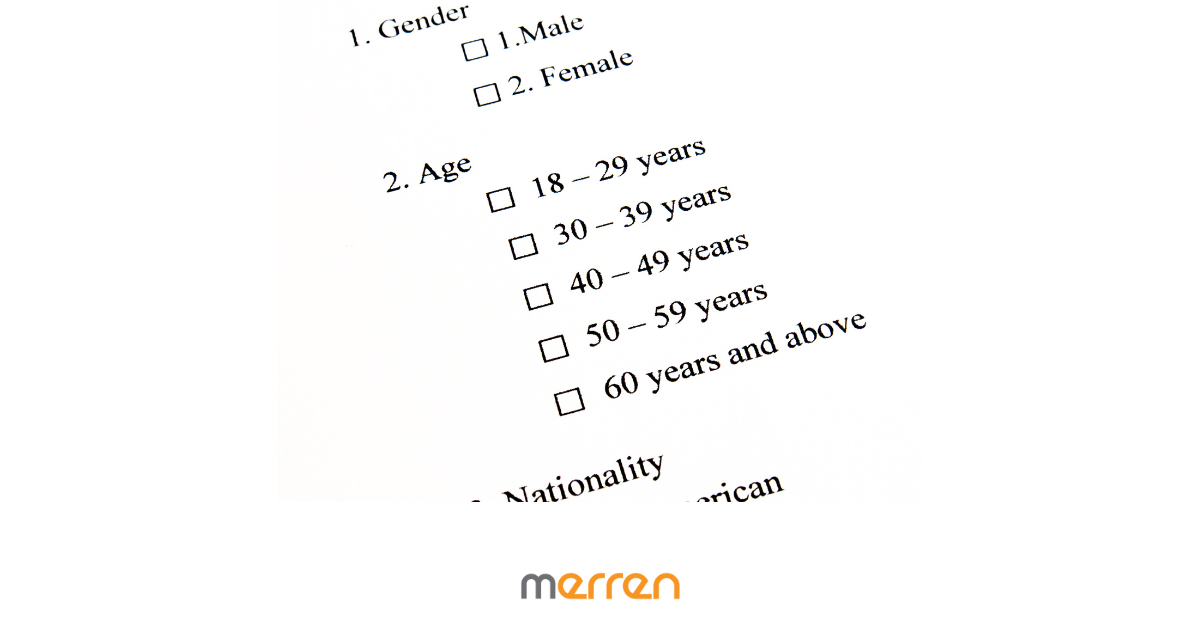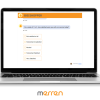Demographic questions are of primary importance as they help an organisation understand their target audience better. They allow you to gain insights into the characteristics of your customers, such as their age, gender, ethnicity, education level, income . In this blog post, we will discuss everything about demographic questions: what they are, how to ask them, when and where to ask them. We will also delve into the different types of demographic questions and how they can be used to segment your audience. One can personalize the marketing messages, and even improve your customer relationship management (CRM). So whether you’re a marketer looking to optimize your campaigns or a business owner trying to better understand your target market, this guide will give you all the information you need on demographic questions.
What are Demographic Questions?
Demographic questions provide a wide range of information on factors such as household income, marital status, education level, employment status and ethnicity to name a few. Incorporating standard demographic question templates in online surveys or market research helps in understanding what motivates potential customers, their buying power and cultural background. Demographic questions are a good way to create a persona mapping before you create communication strategies. Using demographic question-responses, you can perform cross-tabulation and subgroup comparisons and carry out market segmentation and research. It is crucial to exercise caution to ensure that they bring the required data while also being mindful of privacy concerns.
How to ask demographic questions?
The survey has to respect respondent privacy. Topics such as age, race, sexual preferences, educational background can be deemed as sensitive or biased questions. So it is important to frame this kind of question in a way that you get the required answer from your respondent and adhere to their sensibilities at the same time.
When to ask demographic questions?
Questions on age, race, marital background, sexual orientation can be deemed as personal or biased questions. It is recommended to avoid these questions unless it is absolutely necessary for your survey responses. Meanwhile, simple metrics of age, location and gender can be relevant when surveying on certain products that are targeted for specific audiences only. Marketers can place demographic questions right at the beginning of the survey before displaying a set of questions that follow suit. This will help collect important metrics before the actual survey.
The Types of Demographic Questions
Demographic questionnaires usually comprise different question types that allow researchers to gather valuable information from their target respondents. Some of these question types include basic demographics (such as age range), geographic demographics (to know where they live), psychographics (values and behavior), and behavior-based demographics (past habits or future intentions). These insights help businesses in understanding their customers’ background better and tailor their marketing campaigns accordingly.
Age demographic questions
Age related questions are open ended or participants can choose from a grouped range of choice (in case they do not want to reveal the exact number). The age ranges will be as example: 18 to 24, 25 to 30, 31 to 36 etc. Participants can choose from an age range that represents their age group.
Gender and ethnicity based demographic questions
Participants choose between male, female or transgender (non-binary) options. This segmentation can help marketers create customized campaigns, communications and push gender relevant products and services. Alternatively, participants can also opt for ‘prefer not to say’ option. This keeps in mind the privacy of the respondent.
For ethnicity related questions, surveys can be framed with options such as ‘Asian, African-American, Caucasian, Hispanic, Latino’ etc. On the other hand, respondents can also opt to answer it in an open-ended manner where they can mention their ethnicity in detail.
Educational qualification based demographic questions
Educational qualification involves asking the audience on their level of education (high school, university degrees, master’s degree to name a few). They can also mention the year of education or provide the number of years they have spent in formal education.

Employment and income based demographic questions
For employment based queries, participants can select the income bracket that corresponds to their annual household income. This can be stated as ‘between $25000 to $30000, $30000 to $40000’ and place it as a range based survey. They can also mention their current employment status (unemployed, private employee, government employee, self-employed options) This makes for a good segmentation when marketers consider using survey incentives, coupons and rewards to keep incentives very relevant and sensible for survey respondents.
Location demographic questions
Participants can mention the location or country they hail from. To pinpoint exact locational data, they can offer the zip code. This will help businesses understand the cultural differences, create location-sensitive marketing and curate communication strategies that can best suit the relevant audience. Location based options will ask for your country of residence from a drop down option box.
Geographic segmentation is important to create a user persona who may have vastly different traits and different methods of communicating with brands.
Marital status and household size based demographic questions
Participants can indicate if they are currently unmarried or in a domestic partnership. They can also indicate if any respondents are married , divorced or widowed. While these are sensitive questions, it is recommended to place these options in a survey only if the survey form will be relevant to these questionnaires.
Household size indicates the number of individuals living in the household. They can choose from a range of options stated as ‘1 to 3 people, 4 to 8, 5 or more’ etc. These questions are of critical importance when market researchers are collecting national census data.
Language and cultural demographic questions
Respondents can choose from a range of languages they speak. This data is going to be very useful when it comes to multilingual surveys. Multilingual surveys are a good way to create relatable survey forms for these audiences. While not everyone may speak English, using a regional language can increase survey response rate. They can also indicate their proficiency in the language (fluent, native proficiency, professional proficiency etc).
Understanding cultural based segmentation can help brands stay sensitive to their respondents. For example, people may be browsing fast food chains on the website. The fast food brands from the USA cannot display the same menu for India since they need to be culturally sensitive to what people may prefer.
Political and religion based demographic questions
This type of a demographic question may be biased and highly sensitive since this is personal information that varies from person to person. There could be events from a certain political party that may require attendance from a certain segment of population. So it is recommended to ask questions pertaining to religion and politics only if there are campaigns that are going to be relevant for the respondents.
The Benefits of Demographic Questions for Your Business
Demographic data helps you segment your audience properly and create personalized communication that resonates with your respondents. With demographic types of questions, organisations can curate better communication strategies that are going to be relevant for the buyer, especially on social media platforms of Facebook ,Twitter or website based targeting.
Customer profiling
Gaining insights about the demographic composition of your customer base plays a crucial role in forming comprehensive customer profiles. By scrutinizing demographic information, enterprises can recognize shared characteristics and inclinations among the customer base. This data assists in crafting precise buyer personas and personalizing commodities or amenities to cater to their requirements more efficiently.
Market segmentation
The use of demographic information enables businesses to categorize their intended audience into separate groups based on common characteristics. Through this segmentation, customized marketing strategies and product offerings can be developed for each specific group, ultimately enhancing the success rate of advertising campaigns and maximizing the return on investment.
Improved CRM and CX
The use of demographic information allows businesses to personalize customer experiences. By analyzing this important data, organizations can provide specific messaging, promotions, and suggestions for their customers. An example of this would be an e-commerce website using age and gender data to propose appropriate products or offer customized discounts, resulting in an improved and individualized customer experience.

Effective advertising and communication
With demographic data, businesses can select the appropriate advertising channels and communication platforms. Suppose your target audience primarily consists of young adults. In that case, social media advertising might prove more fruitful than traditional print media. Knowledge about demographic inclinations facilitates the optimization of marketing budgets by concentrating on areas that are more likely to generate positive outcomes.
Product development and innovation
The study of demographics offers valuable knowledge on the changing requirements and likings of diverse consumer segments. With a thorough examination of responses, enterprises can detect new patterns, predict alterations in demand, and create pioneering goods or services that cater to particular segments of people. This proactive strategy can provide businesses with a competitive advantage in the market.
Targeted sales promotion for respondents
Analyzing responses from demographic survey questions, businesses can identify prospects for targeted sales and promotions. For instance, by examining income levels, businesses can devise pricing strategies or promotional offers that cater to specific income groups. Such a strategy can potentially boost sales and foster customer loyalty.
Conclusion
Merren offers multiple survey templates that can bring high response rates. However, it is important to keep in mind the sensitive information when collecting data from people. It is recommended to keep certain options open-ended so that people can get the space to share their thoughts. Using these survey results, business and organisations can curate better marketing strategies that will be relevant for the audience.
To understand how you can develop your own survey, sign up for a 14 day free trial with Merren. You can also make an instant survey template using our AI Survey Builder. Use omni-channel platforms of Whatsapp Survey, Dynamic email or web based chatbots to collect information today.





